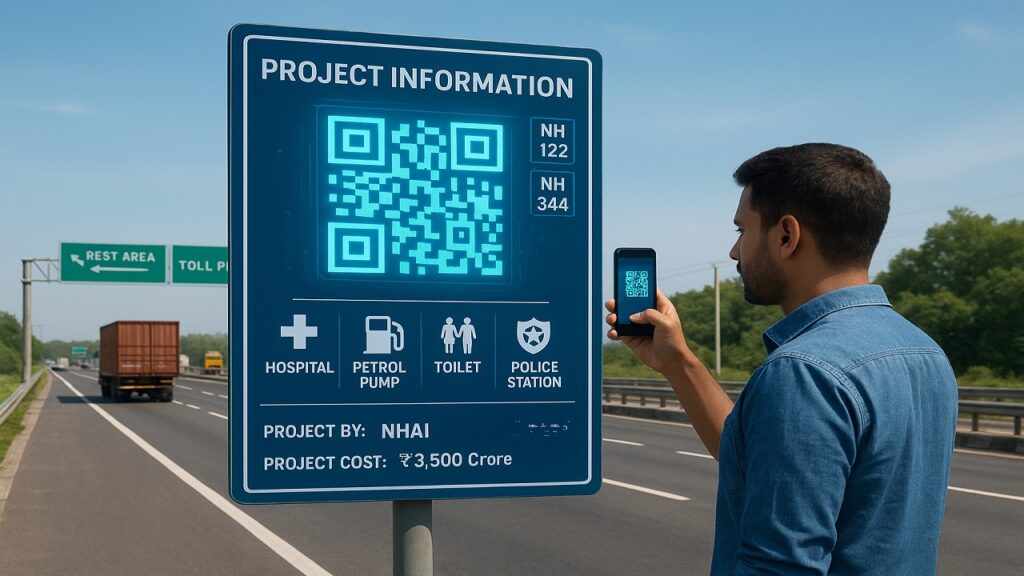Context
The National Highways Authority of India (NHAI) has unveiled plans to install QR code-enabled Project Information Sign Boards across national highways. This initiative integrates digital technology with transport infrastructure to enhance transparency, commuter awareness, and road safety.

What are QR Code Sign Boards?
- Digital information boards with embedded QR codes for instant access to highway-related details.
- To be installed at toll plazas, rest areas, truck lay-byes, start/end points, and wayside amenities.
Aim of the Initiative
- Transparency: Improve accountability in highway construction and maintenance.
- Public Empowerment: Give commuters real-time information on facilities and safety.
- Road Safety: Facilitate rapid connection with emergency services and support providers.
Key Features
- Project Details via QR Code: Includes highway number, chainage, project length, and timelines.
- Contact Information: Highway Patrol, Toll Manager, Project Manager, Resident Engineer, and NHAI field office.
- Emergency Helpline: 1033 prominently displayed for immediate assistance.
- Real-time Nearby Facilities: Information on hospitals, toilets, petrol pumps, police stations, repair shops, and e-charging stations.
- Strategic Placement: Ensures visibility at toll plazas, rest areas, and high-traffic locations.
Relevance to UPSC Syllabus
- GS-II (Governance & Transparency): Enhances citizen-centric governance and accountability.
- GS-III (Infrastructure & Road Safety): Combines transport infrastructure with digital governance and safety innovation.
- Essay / GS-IV (Ethics & Technology in Public Service): Serves as a case study on transparency, efficiency, and public trust through digital tools.
Conclusion
The QR code-enabled sign boards by NHAI represent a significant step towards digital governance in road infrastructure. By ensuring transparency, empowering commuters, and improving safety, this initiative demonstrates how technology can strengthen citizen-centric services. For UPSC aspirants, it is a relevant example linking governance, infrastructure, and ethics.
Source : DD News
